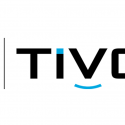
In recent years the term ‘gig economy’ has come to the fore and has made a big impact on the lives of many workers and consumers around the world. This new ecosystem where goods and services are provided on an as-needed basis by workers who aren’t beholden to long term contracts has introduced new levels of flexibility into our lives. Companies like Uber and Deliveroo have used technology to revolutionise how we take a taxi or get our takeaway delivered from our favourite restaurant that never did delivery before.
These new business models are also evident in the world of media and entertainment where consumers can leverage new technology to consume the content, they want on terms that are much more flexible than those available in the past. Led by the over-the-top (OTT) and subscription video on demand (SVOD) services such as YouTube, Netflix and Now TV, consumers – set in motion by the younger generations at the centre of the gig economy – are rapidly changing how they consume media.
Content Consumption Habits
Consumers today have far different – and far more diverse – expectations when it comes to video entertainment. Since they have greater exposure to a range of OTT and web-based content than ever before, this is influencing their perception of innovation and raising the bar for every player in the media and entertainment industry.
According to the BARB ‘The SVOD Report’[1] from January 2018, it revealed that most participants in the study observed the increasing significance of non-linear viewing, with catch-up and on demand services increasing in popularity. The study shows that more than nine million UK households subscribe to at least one SVOD service, with households adopting at least one service grown by 24 percent to 9.5 million homes from 2014 to 2017.
Consumers are also driving the need for spontaneous viewing – YouTube is already capitalising on this. With the need for instantaneous watching in audiences, rather than long-term commitments, and the flexibility on offer from SVOD services, the flexible provision of entertainment content will be a step in right direction for media and content organisations – and the industry as a whole.
Changing business models
Media and entertainment providers in the UK only need to look across the pond for examples of a business model that enables the flexibility and spontaneity that today’s consumers desire. They include the use of US-touted, ‘skinny bundles’ that offer fewer channels than traditional pay TV providers and can fit around the lives of consumers living in a gig economy.
According to TiVo’s Q4 2017 Online Video and Pay-TV Trends Report, the amount of people who have ‘cut the cord’ – or cancelled their pay TV subscriptions – and are not re-subscribing to cable in the US has increased by 6.1 percentage points quarter over quarter and 4.6 points year over year[2]. Interestingly, 58.4 percent of pay TV providers said the availability of a skinny bundle would persuade them to stay subscribed to cable, while 42.5 percent would stay if content from all service providers, which includes OTT, was in one place.
In addition, content discovery experiences are critical to keeping consumers used to instantaneous access to content satisfied. By offering rich, high-quality, immersive experiences that are consistent across platforms as part of their offering, providers can positively affect viewer engagement. This is something SVOD services score highly on, while pay TV providers subscribers still struggle to easily find something to watch.
The future of media and entertainment
With the gig economy meeting the working needs of millions of people in the UK, it will not be surprising if 2019 sees these attitudes being reflected in the entertainment industry. In fact, gig economy workers are 34 percent more likely to be aged 16-30 than other self-employed workers and since 60 percent of young adults aged between 16-24 have access to one of the SVOD services, it makes sense for providers to tailor their business models to meet the needs of a younger demographic[3].
[1] http://www.barb.co.uk/download/?file=/wp-content/uploads/2018/01/BARB-SVOD-White-Paper_FINAL.pdf
[2] http://blog.tivo.com/2018/03/tivo-q4-2017-video-trends-report/
[3] https://www.thersa.org/globalassets/pdfs/reports/rsa_good-gigs-fairer-gig-economy-report.pdf
ABOUT KAUSER KANJI
Kauser Kanji has been working in online video for 19 years, formerly at Virgin Media, ITN and NBC Universal, and founded VOD Professional in 2011. He has since completed major OTT projects for, amongst others, A+E Networks, the BBC, BBC Studios, Channel 4, DR (Denmark), Liberty Global, Netflix, Sony Pictures, the Swiss Broadcasting Corporation and UKTV. He now writes industry analyses, hosts an online debate show, OTT Question Time, as well as its in-person sister event, OTT Question Time Live.
